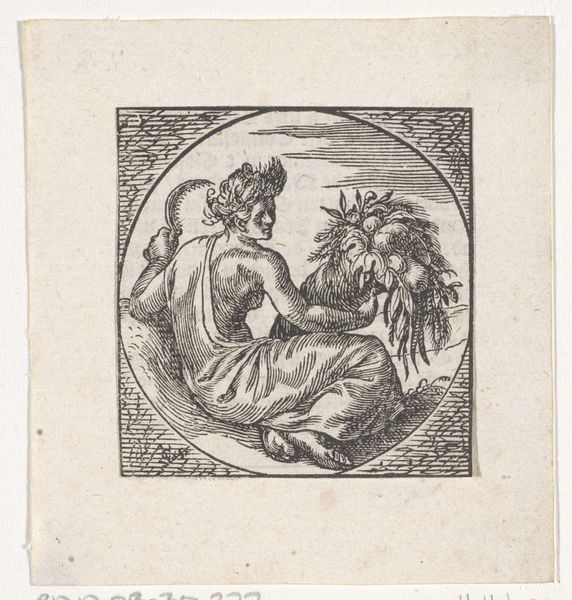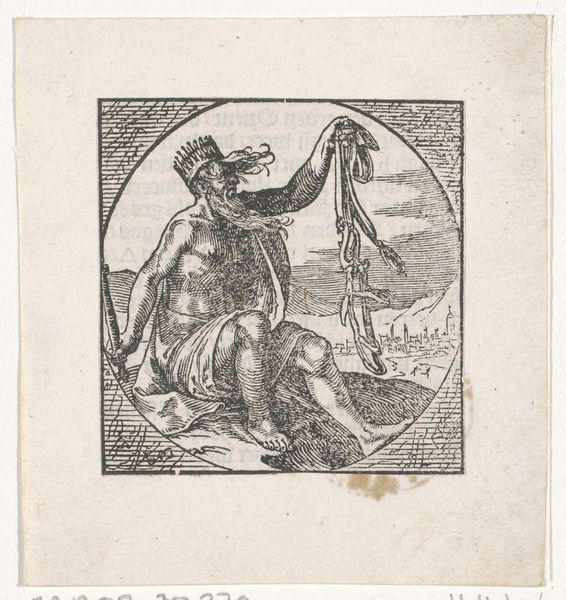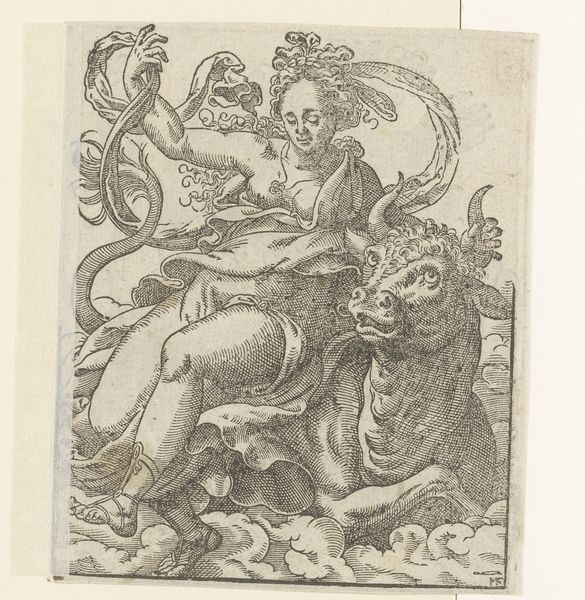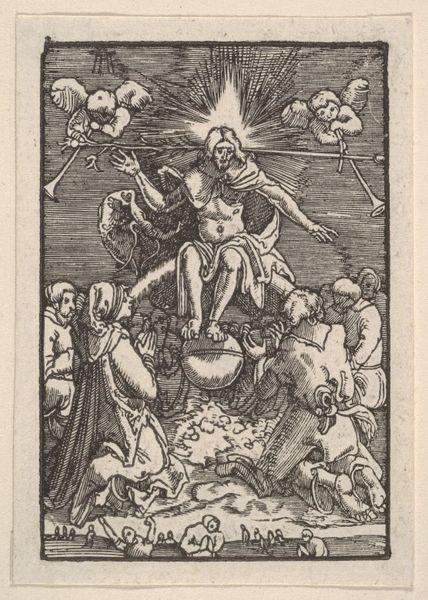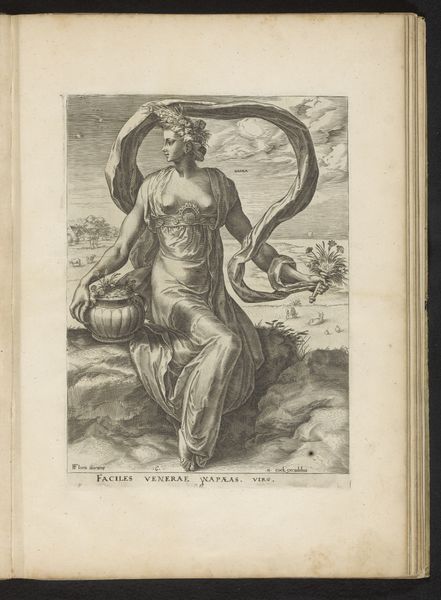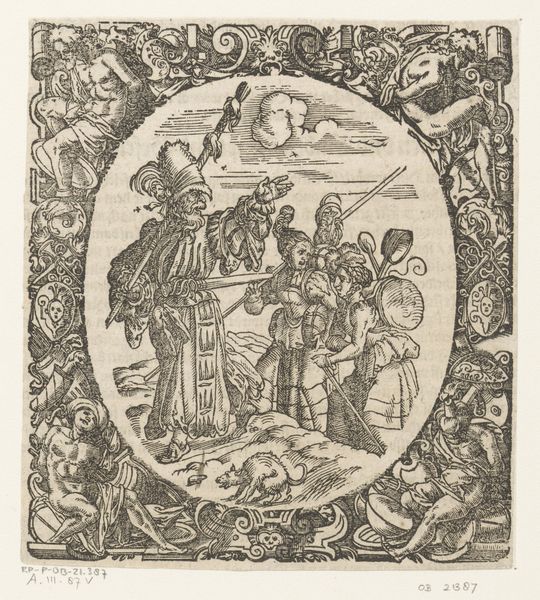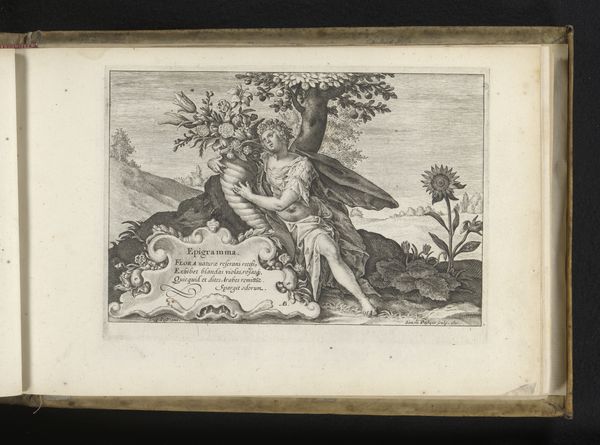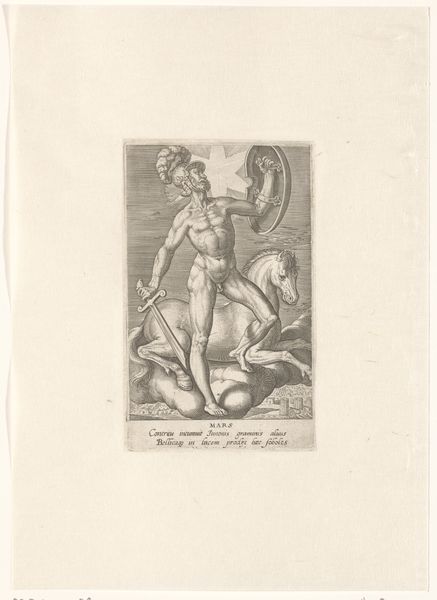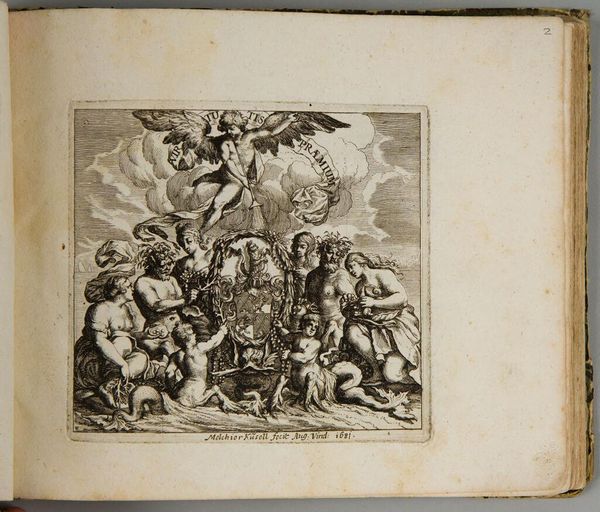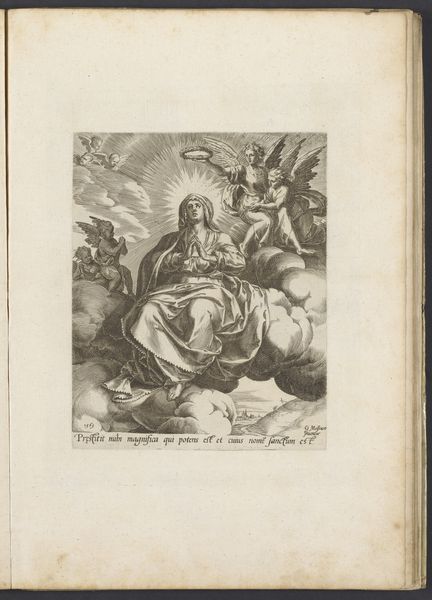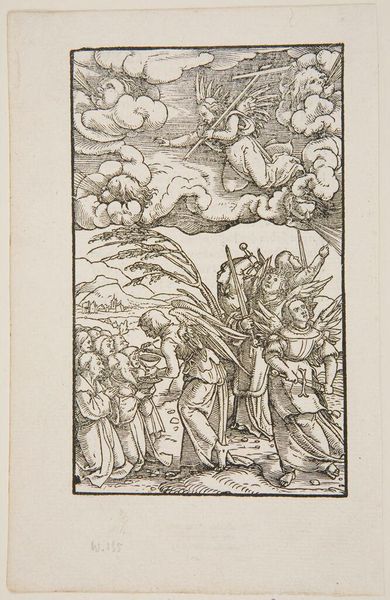
print, engraving
#
allegory
#
pen drawing
# print
#
pen illustration
#
pen sketch
#
landscape
#
figuration
#
11_renaissance
#
northern-renaissance
#
engraving
Dimensions: height 89 mm, width 84 mm
Copyright: Rijks Museum: Open Domain
Christoffel van Sichem II created this woodcut titled "Herfst"–or Autumn–in the Netherlands during the 17th century. The piece depicts a male figure, adorned with grapes and vine leaves, holding a chalice in one hand, and grapes in the other. This imagery evokes Bacchus, the Roman god of wine, ecstasy, and fertility, representing the abundance of the autumn harvest. But consider too the historical context: the Netherlands in the 1600s was undergoing immense social and economic change. This image of plenty would have resonated deeply with a populace well aware of the seasons and the relationship to food, as the Dutch Golden Age was built on international trade, colonial exploitation, and the labor of enslaved people. The abundance celebrated in the image is thus complicated by the realities of inequality. Does this representation serve as a moment of escape, or as a reminder of the complex economic realities of the time?
Comments
No comments
Be the first to comment and join the conversation on the ultimate creative platform.
